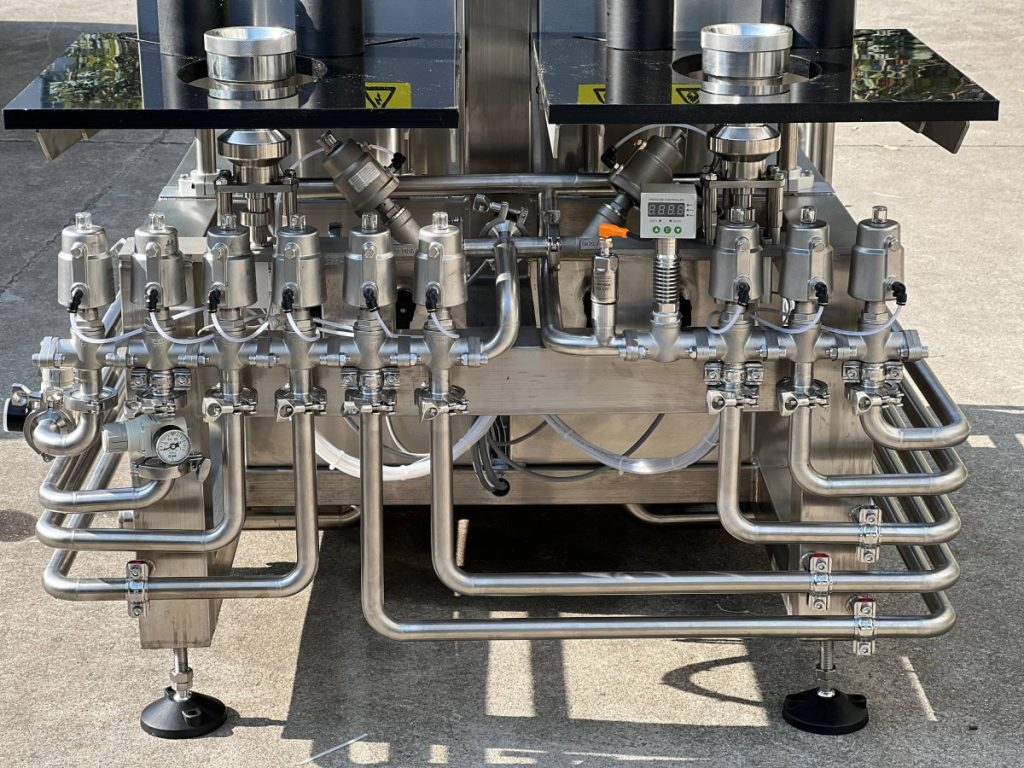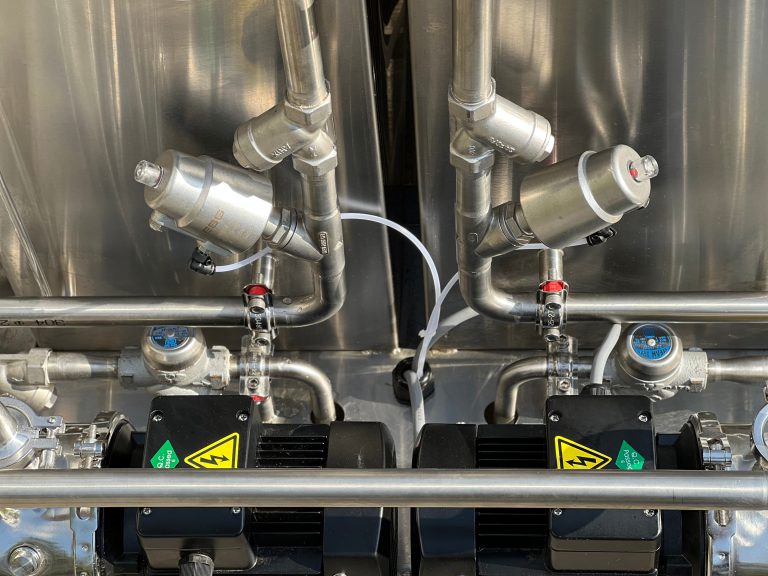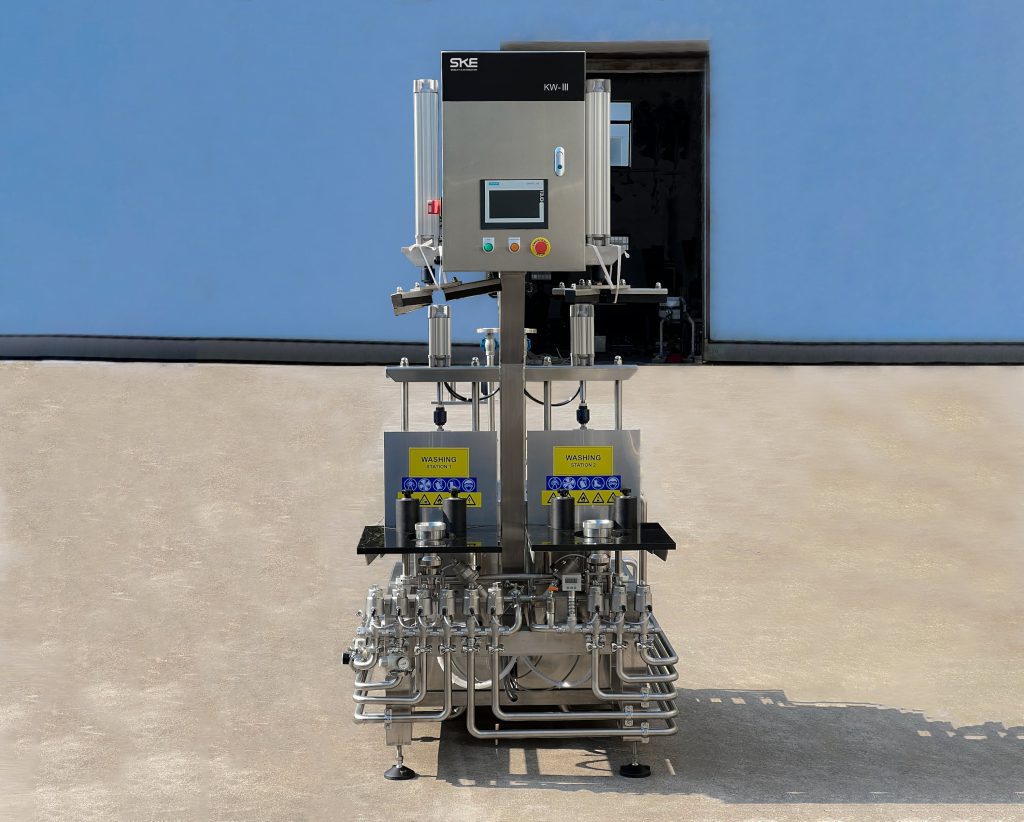Einführung

In der Fertigung kann die Wahl zwischen automatischen und manuellen Flüssigkeitsabfüllmaschinen erhebliche Auswirkungen auf Effizienz, Produktivität und Produktqualität haben. Flüssigkeitsabfüllprozesse sind in Branchen von der Pharmaindustrie über die Kosmetik bis hin zur Lebensmittelproduktion von entscheidender Bedeutung. Dieser Blog untersucht die Feinheiten sowohl automatischer als auch manueller Maschinen und beleuchtet ihre Funktionen, Vorteile und Überlegungen.
Automated Flüssigkeitsabfüllmaschinen
Automated liquid filling machines represent the pinnacle of efficiency and precision in modern manufacturing. These machines utilize advanced technology such as servo motors, PLC controls, and sensors to automate the filling process. They are designed to handle high-volume production demands with consistent accuracy and speed.
Features of Automated Flüssigkeitsabfüllmaschinen
Automated machines integrate sophisticated components to ensure precise filling:
- Precision and Accuracy: Automated machines use sensors and automated controls to achieve consistent fill levels, minimizing product waste and ensuring uniform product quality.
- High Throughput: They are capable of filling a large number of containers per minute, significantly increasing production efficiency.
- Anpassungsoptionen: Automated machines can be customized with multiple filling heads and integrated into existing production lines for seamless operation.
Pros and Cons
Automated liquid filling machines offer several advantages but come with their own set of considerations:
Vorteile:
- High Accuracy: They provide precise measurement and filling, reducing product giveaway and improving overall product quality.
- Erhöhte Effizienz: Automated machines operate continuously with minimal downtime, maximizing production output.
- Adaptability: They can handle a wide range of liquids and container sizes, making them suitable for diverse manufacturing environments.
Nachteile:
- Höhere Anfangsinvestition: Automated systems require a significant upfront investment compared to manual machines, which can be a barrier for smaller businesses.
- Complex Maintenance: Maintenance and troubleshooting may require skilled technicians and specialized knowledge of electronic and mechanical components.
- Schulung des Bedieners: Proper training is essential for operators to maintain and operate automated machines effectively.
Handbuch Flüssigkeitsabfüllmaschinen
Manual liquid filling machines have been a cornerstone in small to medium-scale production for their simplicity and affordability. These machines typically require operators to control the filling process manually, using mechanisms like valves or levers. While they offer flexibility and ease of operation, they are best suited for applications where production volumes are lower and precision requirements may be more forgiving.
Features of Manual Flüssigkeitsabfüllmaschinen
Manual machines are characterized by their straightforward design, consisting of essential components such as a filling nozzle, a container platform, and manual controls. They are versatile and can handle various types of liquids, including those with different viscosities.
Pros and Cons
Manual liquid filling machines have distinct advantages and limitations:
Vorteile:
- Low Initial Cost: Manual machines are generally more affordable upfront, making them accessible to startups and small businesses with limited budgets.
- Ease of Operation: They are straightforward to operate and require minimal training for personnel.
- Vielseitigkeit: Manual machines can handle a wide range of liquids and container sizes, offering flexibility in production.
Nachteile:
- Labor-Intensive: They rely heavily on operator skill and attention, leading to potential inconsistencies in fill levels.
- Begrenzte Kapazität: Manual filling processes are slower compared to automated systems, which may not be suitable for high-volume production needs.
- Inconsistent Fill Levels: Variability in operator technique can result in variations in fill levels, impacting product consistency.
Comparison: Automated vs. Manual Flüssigkeitsabfüllmaschinen

Comparison of Automated vs. Manual Liquid Filling Machines: Evaluating Accuracy, Speed, Labor Requirements, Initial Cost, and Flexibility.
| Criteria | Automated Machines | Manual Machines |
|---|---|---|
| Genauigkeit | Very high | Variable |
| Geschwindigkeit | Hoch | Mäßig |
| Labor | Minimal | Bedeutsam |
| Anschaffungskosten | Hoch | Niedrig |
| Flexibilität | High (customizable) | Mäßig |
Abschluss
Choosing between automated and manual Flüssigkeitsabfüllmaschinen involves assessing factors such as production volume, budget constraints, and desired level of precision. While automated machines excel in high-volume settings requiring consistent accuracy, manual machines remain relevant for smaller operations or specialized tasks. Ultimately, the decision should align with the specific needs and objectives of the manufacturing facility.
Häufig gestellte Fragen
Q:Which type of Flüssigkeitsabfüllmaschine is best for startups?
A:For startups with limited budgets and smaller production volumes, manual liquid filling machines are often more cost-effective and easier to manage initially.
Q:How can automated liquid filling machines improve production efficiency?
A:Automated machines reduce human error, increase throughput rates, and allow for continuous operation, thereby optimizing overall production efficiency.
Q:What maintenance is required for automated Flüssigkeitsabfüllmaschinen?
A:Automated machines require regular calibration, cleaning of sensors, and periodic inspection of mechanical components to ensure optimal performance and longevity.
Q:Are automated liquid filling machines suitable for all types of liquids?
A:Yes, automated machines can be adjusted to handle liquids with varying viscosities and characteristics, ensuring versatility in manufacturing processes.
Q:What challenges do manual Flüssigkeitsabfüllmaschinen present?
A:Manual machines require skilled operators to maintain consistency in fill levels, are slower in operation compared to automated systems, and may not be scalable for growing production needs.

